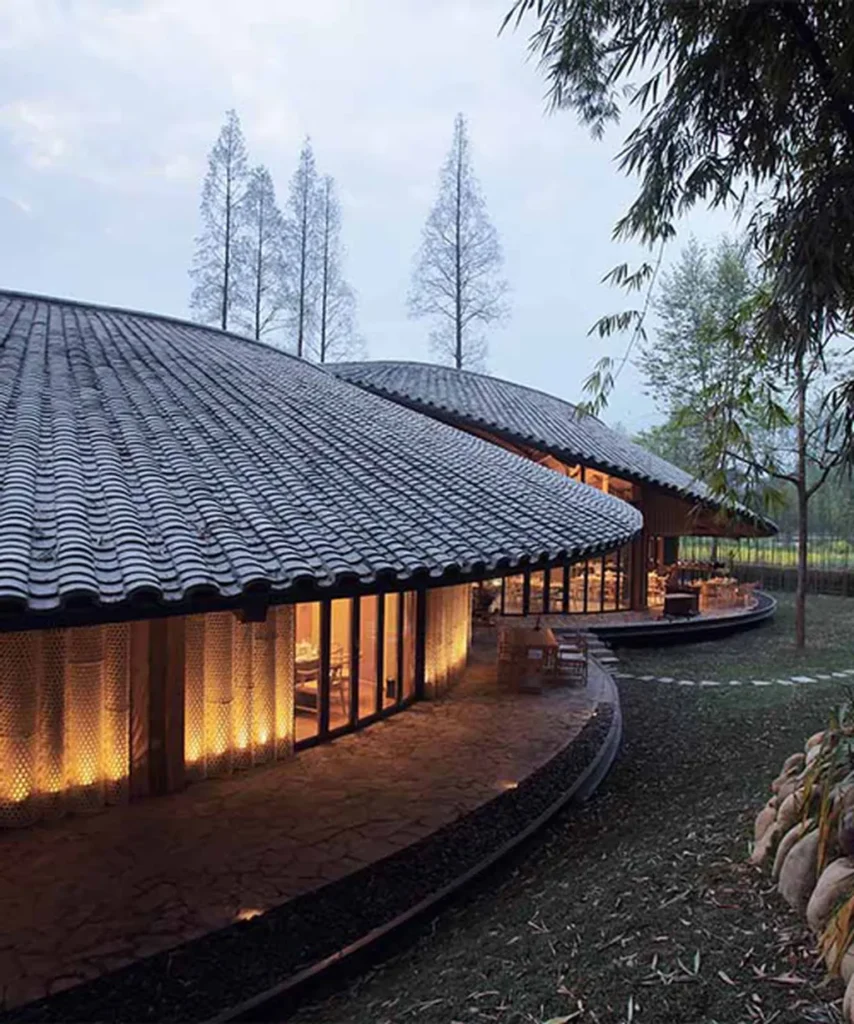In the heart of Sichuan, China, a unique architectural project is not only revitalizing traditional craftsmanship but also paving the way for sustainable rural regeneration. The IN BAMBOO Project, a case study in the latest issue of the *Journal of Asian Architecture and Building Engineering* (translated as *Journal of Asian Architecture and Building Engineering*), is a testament to the power of integrating parametric design with local artisanal methods. Led by Lin Xiao from Universiti Kebangsaan Malaysia, this research offers a compelling model for the future of low-carbon, regionally grounded architecture.
The IN BAMBOO Project stands out for its innovative use of parametric design, a process that employs algorithmic models to generate complex, efficient structures. By combining this cutting-edge technology with traditional bamboo weaving techniques, the project has achieved a remarkable balance between modernity and cultural heritage. “The reactivation of traditional bamboo weaving techniques, when combined with modular timber components, fosters environmental responsiveness and community engagement,” explains Lin Xiao. This fusion not only reduces embodied energy but also revitalizes intangible cultural heritage through built form.
One of the most striking aspects of the project is its architectural layout, characterized by a double-loop plan. This design demonstrates spatial adaptability, accommodating exhibition spaces, accommodation, and communal areas. The use of prefabricated timber components enhances construction efficiency, reducing waste and lowering costs. “This approach contributes to low-carbon architecture while fostering a sense of community and cultural pride,” adds Xiao.
The commercial implications for the energy sector are significant. By reducing embodied energy and promoting sustainable materials, the IN BAMBOO Project offers a replicable model for future developments. This approach could inspire similar projects worldwide, particularly in rural areas where traditional craftsmanship is at risk of being lost. “The integration of digital design tools with vernacular materials and skills not only supports sustainable rural regeneration but also creates economic opportunities for local artisans,” notes Xiao.
As the world grapples with the challenges of climate change and cultural preservation, the IN BAMBOO Project provides a beacon of hope. Its success underscores the potential of parametric timber architecture to shape a more sustainable and culturally rich future. For professionals in the construction and energy sectors, this research offers valuable insights into the benefits of merging traditional craftsmanship with modern technology. The findings, published in the *Journal of Asian Architecture and Building Engineering*, highlight a path forward that is both innovative and deeply rooted in cultural heritage.
In an era where sustainability and cultural preservation are paramount, the IN BAMBOO Project serves as a powerful example of how architecture can bridge the gap between tradition and innovation. As Lin Xiao and her team continue to explore the possibilities of parametric design and traditional craftsmanship, the future of sustainable rural regeneration looks brighter than ever.

